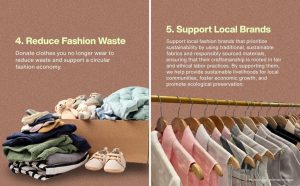
As the awareness of environmental issues continues to grow, many people are looking for ways to make a positive impact on the planet. One way to do this is by building an eco-friendly wardrobe. By choosing sustainable and ethical clothing options, you can reduce your carbon footprint and support environmentally-friendly practices in the fashion industry. Here are some tips on how to build an eco-friendly wardrobe:
Choose Quality Over Quantity
One of the key principles of building an eco-friendly wardrobe is to focus on quality over quantity. Instead of buying cheap, fast fashion items that will quickly fall apart and end up in a landfill, invest in high-quality pieces that will last for years to come. Look for clothing made from durable, natural materials like organic cotton, linen, wool, and bamboo.
Support Sustainable Brands
When shopping for new clothing, do your research and support brands that prioritize sustainability and ethical production practices. Look for certifications like GOTS (Global Organic Textile Standard) or Fair Trade to ensure that the clothing you buy is made with care for both the environment and the people who make it. Some popular sustainable brands include Patagonia, Eileen Fisher, and Reformation.
Opt for Second-Hand and Vintage
Another great way to build an eco-friendly wardrobe is by shopping second-hand or vintage. By giving new life to pre-loved clothing, you can reduce the demand for new resources and minimize waste. Thrift stores, consignment shops, and online resale platforms like ThredUp and Poshmark are great places to find unique and sustainable pieces for your wardrobe.
Choose Timeless Styles
Instead of following fast fashion trends that come and go, focus on building a timeless wardrobe with classic, versatile pieces that will never go out of style. By choosing timeless styles, you can create a wardrobe that lasts for years and transcends seasonal trends, reducing the need to constantly buy new clothing.
Care for Your Clothing
Properly caring for your clothing is essential to building an eco-friendly wardrobe. Follow care instructions, wash your clothes in cold water, air dry when possible, and mend any damages instead of throwing them away. By taking good care of your clothing, you can extend its lifespan and reduce the environmental impact of your wardrobe.
Conclusion
Building an eco-friendly wardrobe is a great way to support sustainability and reduce your carbon footprint in the fashion industry. By choosing quality over quantity, supporting sustainable brands, shopping second-hand and vintage, opting for timeless styles, and caring for your clothing, you can create a wardrobe that is not only stylish but environmentally-friendly as well. Start making conscious choices today and build a wardrobe that reflects your values and commitment to a greener future.

